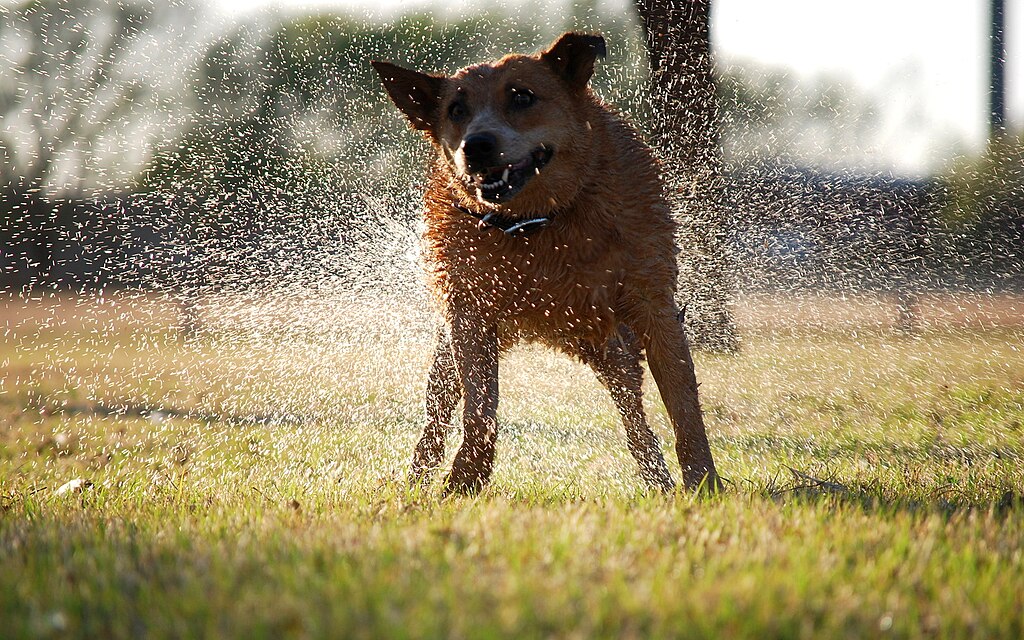The science behind the “wet dog shake”: gentle‑touch nerves trigger a powerful cleanup reflex
If you’ve ever watched a soaked dog explode into a blur of motion, you’ve seen one of biology’s most efficient cleanup tricks. Those rapid oscillations—popularly known as the “wet dog shake”—can fling off the majority of water from a furry coat in a fraction of a second. A new preprint reveals the sensory wiring that kicks this reflex into gear. In mice, ultra‑sensitive touch fibers in the skin detect tiny droplets and send an urgent signal into the brainstem, which then unleashes the shake.
The behavior is ancient and widespread among mammals, and for good reason. Back and neck fur is hard to reach by grooming or licking, yet it’s where rain, cold mist, and irritating particles often land. A well‑timed bout of shaking can remove up to 70% of that water, helping animals conserve heat and shed potential threats like insects or debris. Despite its importance and clear, stereotyped pattern, the neural trigger for this reflex has been a mystery.
The new work points squarely at a class of somatosensory neurons called C‑low‑threshold mechanoreceptors, or C‑LTMRs. These are unmyelinated, slow‑conducting touch fibers that wrap around fine body hairs and excel at reporting gentle, persistent forces on hairy skin. The researchers found that tiny oil droplets on a mouse’s back strongly activated C‑LTMRs, and that directly stimulating these neurons with light was enough to evoke a full wet dog shake. Removing C‑LTMRs blunted the behavior. Crucially, the mechanosensory channel Piezo2—best known for converting physical force into electrical signals—was required, underscoring that this is a touch‑driven reflex at its origin.
What happens after that first spark in the skin? C‑LTMRs connect to a set of projection neurons in the spinal cord known as spinoparabrachial (SPB) neurons. These SPB neurons relay sensory information up to the parabrachial nucleus (PBN), a relay hub in the brainstem. When the team inhibited synapses from SPB neurons, or dampened excitatory neurons in the PBN, both droplet‑evoked shakes and C‑LTMR‑evoked shakes were impaired. Together, the results outline a core pathway: C‑LTMRs in hairy skin detect tiny forces via Piezo2, signal through SPB neurons, and recruit PBN circuits that launch the shake.
Why C‑LTMRs and not other touch fibers? Hairy skin is richly innervated by multiple mechanoreceptor types. Aβ rapidly adapting LTMRs, for example, respond briskly to quick brush or skin indentation and are great at capturing dynamic touch. C‑LTMRs, by contrast, fire more slowly and can sustain their response to gentle, lingering stimuli—exactly the kind of forces water droplets or small crawling insects would produce. They form lanceolate endings around the smallest body hairs that make up the insulating undercoat, positioning them as sentinels for subtle disturbances on the fur. Interestingly, the study also saw less scratching when C‑LTMRs were ablated, hinting that these fibers contribute to protective, self‑clearing behaviors beyond shaking.
There were anatomical surprises, too. Despite a fairly uniform spread of C‑LTMR terminals across the neck and lower back, stimulation over the dorsal neck was more likely to trigger a strong shake. That bias suggests the spinal cord may contain specialized “motor pattern” circuitry in the cervical region that’s primed to generate the characteristic head‑and‑trunk oscillations. Mapping those circuits is a clear next step.
Shaking isn’t only about touch. Past work showed that stimulating deep brain regions like the hippocampus or septum can provoke the behavior, implying that multiple routes can converge on the same motor program. In the new study, optogenetic activation of other C‑fiber classes—those tuned for potentially harmful touch or for cooling—could also evoke shakes. And in real life, cooling agents and itch‑inducing chemicals can trigger the response. The SPB‑to‑PBN pathway is already implicated in itch and temperature processing, so the PBN likely acts as a hub that integrates different sensory alarms and decides when to flip the “shake” switch.
Beyond the satisfaction of solving a long‑standing puzzle, this work reframes how we think about gentle‑touch fibers. C‑LTMRs are often linked to the pleasant, affective aspects of touch in humans, even “tickle.” Here, they take on a defensive role—detecting the lightest disturbances and driving a fast, whole‑body action that keeps an animal warm, clean, and safe. It’s a neat reminder that one sensory channel can serve comfort in one context and survival in another.
Source: bioRxiv preprint, “A C‑LTMR–spinoparabrachial pathway mediates wet dog shakes for rapid and effective removal of foreign particles from back hairy skin.” https://www.biorxiv.org/content/10.1101/2024.06.10.597395v1.full







